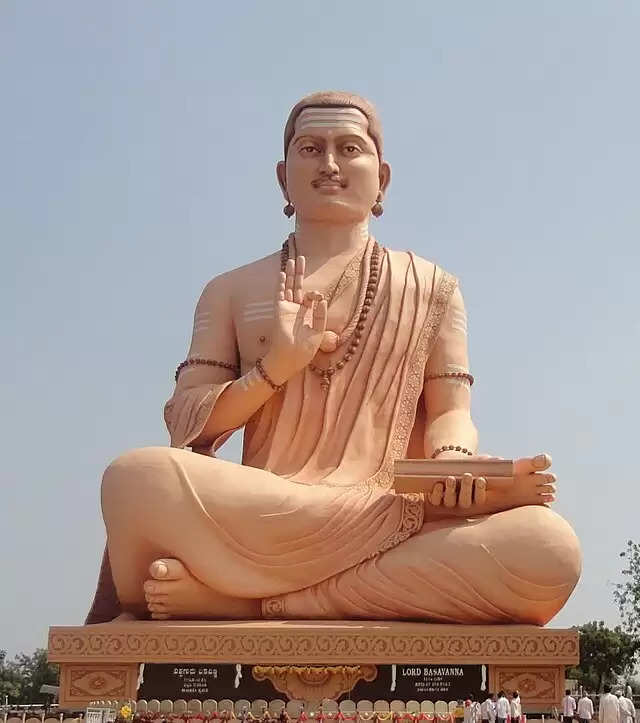Top 10 Photos Of Basavanna

Basavanna, also known as Basaveshwara, stands as an eminent figure in the annals of Karnataka's history—a 12th-century philosopher, statesman, and social reformer whose teachings resonate through the ages. Delving into the life and legacy of this remarkable personality through the lens of photography, we uncover a curated selection of the top 10 photos capturing different facets of Basavanna's enduring influence.
1. Basavanna’s Iconic Statue:

One of the most recognizable images of Basavanna is his statue, often depicted in a contemplative seated posture. Symbolizing his enduring presence and ideals of service, inclusivity, this statue serves as a visual anchor for devotees, embodying the essence of Basavanna's teachings.
2. Ancestral Homestead:
Photographs of Basavanna's ancestral home provide a glimpse into his humble beginnings, serving as a poignant reminder of his roots and upbringing. From simple rural dwellings to more elaborate structures, these images speak volumes about the environments that shaped his early life and the enduring legacy of his teachings.
3. Processions and Festivals:
Vibrant processions and festivals honoring Basavanna are captured in photographs, showcasing the enthusiasm and devotion of his followers across Karnataka. These images depict colorful parades and intricate rituals, underscoring the cultural significance of Basavanna's teachings in contemporary society.
4. Devotees in Prayer:
Photographs depicting devotees in prayer offer insight into the spiritual dimension of Basavanna's legacy. Whether in temples, homes, or outdoor gatherings, these images convey the deep reverence and connection people feel towards him, seeking solace and guidance in his timeless wisdom.
5. Artistic Depictions:
Art serves as a medium to celebrate and interpret Basavanna's teachings, as seen in photographs of intricate paintings, murals, and sculptures inspired by his life. These artistic expressions capture the essence of his philosophy and its enduring relevance in public spaces and sacred sites.
6. Educational Institutions:
Basavanna's emphasis on education is reflected in the establishment of schools, colleges, and universities bearing his name. Photographs of these institutions showcase modern facilities and diverse student bodies, aligning with Basavanna's vision of empowering future generations through knowledge.
7. Social Welfare Initiatives:
Images documenting social welfare initiatives inspired by Basavanna's teachings highlight efforts to address inequality and injustice. From healthcare camps to community kitchens, these initiatives exemplify the practical application of his philosophy in uplifting marginalized communities.
8. Interfaith Dialogue:
Basavanna advocated for interfaith dialogue and harmony, reflected in photographs of gatherings and dialogues among different religious communities. These images exemplify his inclusive approach to spirituality, emphasizing the unity of all beings.
9. Rural Landscapes:
Photographs of rural landscapes associated with Basavanna's life evoke the natural beauty of Karnataka's countryside, inspiring his spiritual insights. From lush green fields to tranquil riversides, these images underscore the importance of preserving the environment, aligning with Basavanna's reverence for nature.
10. Legacy Monuments:
Monuments and memorials dedicated to Basavanna dot Karnataka's landscape, serving as enduring symbols of his legacy. Whether grand statues or modest shrines, these landmarks pay homage to his life and teachings, offering focal points for reflection and inspiration.
Conclusion: Through these photographs, we glimpse into the multifaceted legacy of Basavanna—a philosopher, social reformer, and spiritual guide whose teachings continue to resonate. From iconic statues to grassroots initiatives, each image offers insight into the enduring impact of Basavanna's philosophy on contemporary society. As we reflect on these visuals, may we be inspired to uphold his ideals of equality, compassion, and social justice in our lives.



